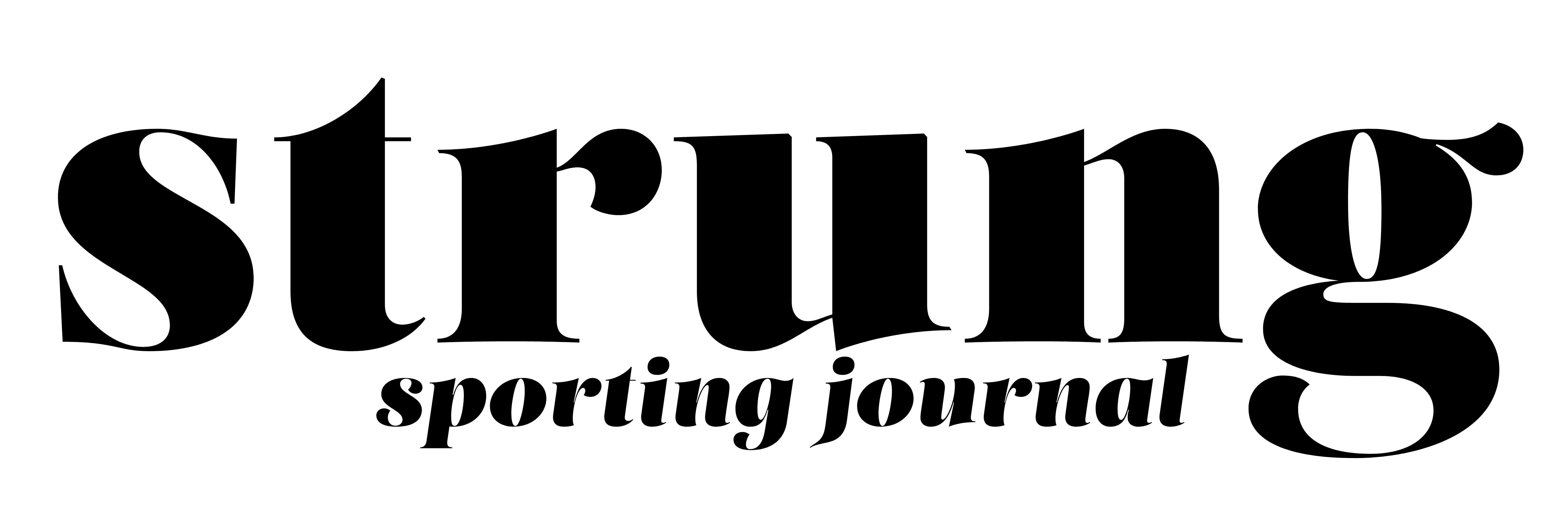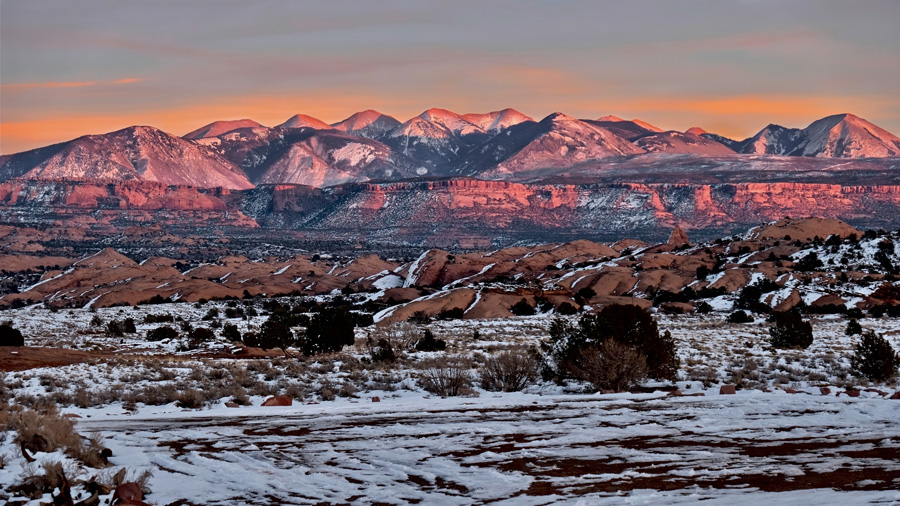Thomas Reed
Does one enjoy getting continually lashed in the face by willow switches in the grouse woods? Perhaps. Is it fun to log countless blistering and fruitless steps on wild prairie dodging rattlesnakes and straddling barbed wire in search of Huns and sharptails? Or slopping through cattail stench and olive thorn to flush a cursing rooster pheasant into a cold west wind that exfoliates your tear-streaked face with the ruthlessness of an unfeeling planet?
Passion drives the human soul and our undaunted canine companions into the strangest situations and the most far-flung places. The apex oddity is the lost terrain that the Spanish, on their quests for golden idols and shining cities in the clouds, called the Northern Mystery: the great dry, sagebrush-swept basin that stretches from eastern Washington and Oregon east across southern Idaho and northern Nevada all the way into western Utah.
This is chukar country.
In chukar country I have performed some of my most foolish acts of zeal. Like the time an old companion and I hiked up a canyon of broken shale into a west wind promising snow and delivering it by the time we got to the top in a can’t-see-shit blizzard to find our setters hard as frozen glass, pointing at the base of an ice-coated juniper. A covey of chukar went up into the brutal wind, throats no doubt full of the driving snow, and we each slapped down two. But that wasn’t the story; the story was the long, bitter march down the mountain with the wind-driven snow pounding at our backs and arriving at the camper frozen stiff and needing at least a half-dozen hot buttered rums until we felt half-thawed.
Or the time I marched alone into yet another blizzard while pals cooked Thanksgiving dinner back at camp. I got into birds that day, but they came at me so quickly from uphill where my unseen white dogs worked in a white landscape that they were over my head and gone before I could swing a gun. Occasionally I barked out a shot but scratched nary a bird, and when it was all over I followed my nose—the scent of a sagebrush campfire mingled with snowflakes—into camp, empty-bagged but ready for turkey and fixings.
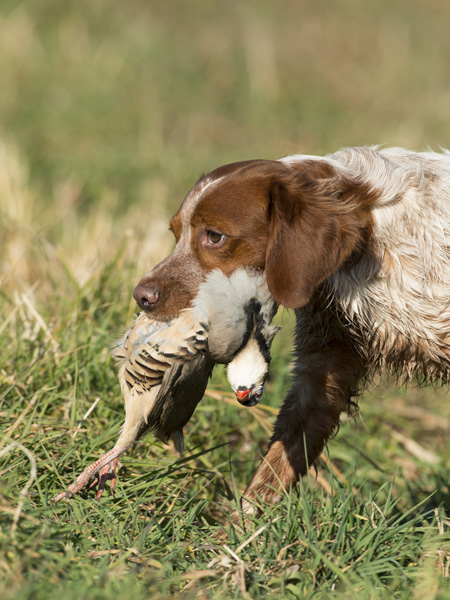 Or another occasion I slogged out into a thick fog covered basin, again following a good setter who was following her nose and not really in need of many other senses. Like sight. There were birds out there in the fog, and they flew over my head as they had in the blizzard. I fired a few shots, but remembered my buddy who was also marching in the fog somewhere and thought, “You know, I better only shoot straight up in the air, because I could easily be shooting at him or one of the dogs.” Fortunately, he was thinking the same thing. Then we popped out of the fog as one might climb on a ladder out of a steaming swimming pool and found ourselves in a glorious wash of sunshine above a surreal sea of cloud that stretched as far as we could see. We’d timed our ascent by accident, and we were both there, above the clouds with our dogs. The gods had given us the why of things: why a couple of simpletons with shotguns would set out from a warm camp into a fog that would scare even the bravest long-haul trucker, carrying shotguns and following bird dogs they couldn’t see. On that spit of golden, sun- and sage-scented land jutting out into an ocean of cloud, there was no need to ask or answer the question.
Or another occasion I slogged out into a thick fog covered basin, again following a good setter who was following her nose and not really in need of many other senses. Like sight. There were birds out there in the fog, and they flew over my head as they had in the blizzard. I fired a few shots, but remembered my buddy who was also marching in the fog somewhere and thought, “You know, I better only shoot straight up in the air, because I could easily be shooting at him or one of the dogs.” Fortunately, he was thinking the same thing. Then we popped out of the fog as one might climb on a ladder out of a steaming swimming pool and found ourselves in a glorious wash of sunshine above a surreal sea of cloud that stretched as far as we could see. We’d timed our ascent by accident, and we were both there, above the clouds with our dogs. The gods had given us the why of things: why a couple of simpletons with shotguns would set out from a warm camp into a fog that would scare even the bravest long-haul trucker, carrying shotguns and following bird dogs they couldn’t see. On that spit of golden, sun- and sage-scented land jutting out into an ocean of cloud, there was no need to ask or answer the question.
Yet in a lifetime of hunting these little creatures of high crag, pucker cliff, and tall sage, one incident stands out for which we were awarded the all-time dolt prize for displaying what we will charitably call extremely poor judgment. This was the time three of us decided that a washed-out bridge was blocking us from some of the finest chukar hunting on the planet. There are times, such as now, when I pay attention to weather forecasts and try to time the travel for windows of good weather. Not then. Snow at home didn’t deter travel on slick roads east out of the Rockies and down to the sagebrush sea of chukar country. Snow turned to rain over the desert, and the rain had begun days earlier. Exactly when the bridge washed out—days, weeks, or months earlier—was unknown. Here we stood, with our three four-wheel drives, looking at the hand-painted “Bridge Out” sign and cursing our luck, without assessing our risk. A lazy desert stream, usually little more than the volume of a couple of garden hoses, now ran about a dozen feet wide and an unknown depth.
“I looked on the map, and there’s a two-track a ways back that looks like it crosses this damned thing,” said Floyd.
“Let’s do it,” I said.
The two-track was sloppy, but it did indeed cross the desert mini-river. We had chains, we had tow ropes, and we had tough pickup trucks and a vintage Bronco. There were chukar on yonder slope; we just knew it. So we plunged across the river and clawed up the other side without much incident. By dark, we had the wall tent set up and were cooking dinner, eager to get out into the desert the next day, just a short drive away from camp.
It had been cold that day, and the mud we’d driven in on had been somewhat solid. But that night while we were sleeping it warmed up, and the mud got softer. After breakfast we all hopped into one diesel pickup and discovered just how soft it was. We made it about 10 feet before the heavy truck sank to its axles in mud. Not to worry: We had two more four-wheel drives. I fired up my early-‘90s Dodge diesel and maneuvered so I could pull out the first truck. But that heavy old truck of mine suddenly felt as if it were dropping into the center of the earth. Stuck solid.
We still had the Bronco. But no surprise: That vehicle, though much lighter, went right into its axles as well. All three burly four-wheel drives to the axles about 15 feet from camp. Going nowhere in the middle of nowhere, well beyond a washed-out bridge.
There began two days of digging. We broke two high-lift jacks. We took old timbers from an abandoned mine and lugged them back to put under spinning tires. We crawled beneath differentials with small shovels and passed buckets up as if we were pioneers digging a well by hand.
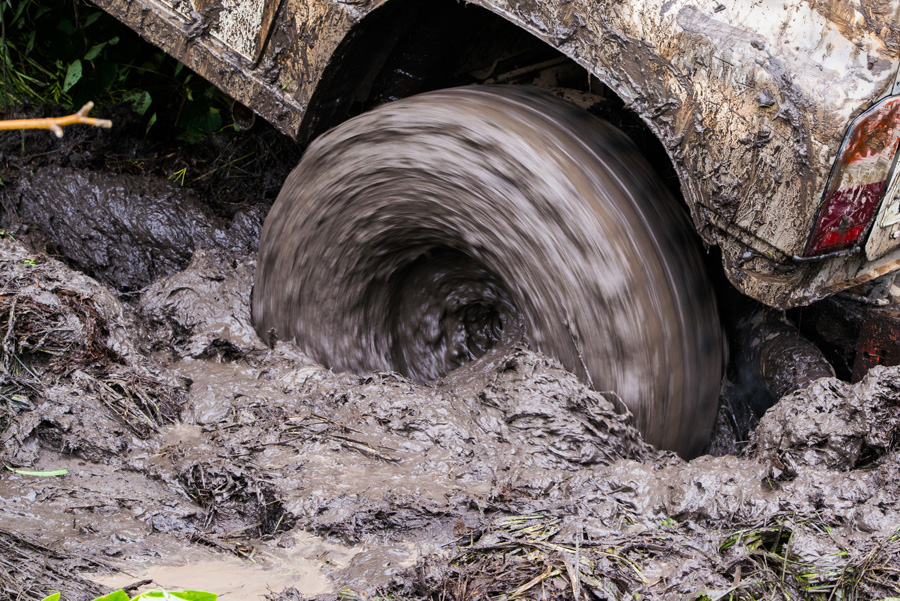 Not all was lost. We had a good warm wall tent with a supply of firewood, we had beer, and we had a radio for a playoff football game or two. Or three or four. Two full days went by, and late on the afternoon of the second day, all the digging paid off. Or maybe it was just the weather getting cooler again and the mud getting stiffer. First we got Fred’s Bronco out, then my truck, and finally Floyd’s.
Not all was lost. We had a good warm wall tent with a supply of firewood, we had beer, and we had a radio for a playoff football game or two. Or three or four. Two full days went by, and late on the afternoon of the second day, all the digging paid off. Or maybe it was just the weather getting cooler again and the mud getting stiffer. First we got Fred’s Bronco out, then my truck, and finally Floyd’s.
And yet.
The next day we decided to get smart and pile into the most off-road-capable of the vehicles, the Bronco. So we left a couple of the dogs in crates in camp and piled into the little Ford and lit out across the desert, following an old Jeep trail toward a chukar cliff. Finally, we were going hunting.
Then we came to another desert wash. It was running full. Fred looked at the river and said, “You know, I think I can do it.” Floyd and I looked at each other. “Sure. Let’s do it. The chukar are on the other side.”
We probed with sticks. It didn’t seem too deep, so we piled in. Halfway across, the Bronco went in over the running boards, and water started pouring in. The current then lifted the truck and washed it downstream 10 feet, where it lodged against a sandbar. We bailed out, trembling. We scurried to take out dogs, shotguns, and everything else of value. We looked at each other, blood drained, the bold attack mode needed for chukar hunting forgotten. We felt truly beaten.
The truck was not going anywhere. It was about 10 miles back to camp, where I could get one of the unstuck diesels and come out and perhaps pull out the Bronco.
“I’ll start walking. Come on, Ike.”
My tricolor setter Ike and I began a trudge. We walked and walked. And walked some more. Meanwhile Floyd and Fred pulled m
ore gear out of the sinking Bronco and wondered if there would be anything left to salvage. I walked some more.
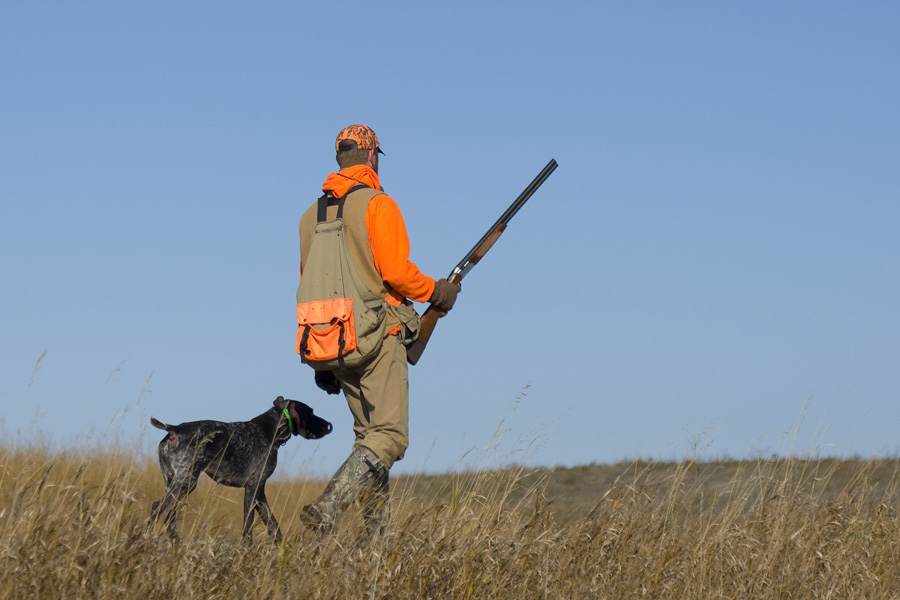
About five miles into it, I heard an engine. A plane? We had not seen a human for days. Four, maybe even five. Even jet contrails are scarce in this country. But then around the bend, here came—of all things—a big yellow backhoe. Here was the perfect machine for the moment, and the moment was damned near spiritual—as if the gods had finally decided that their joke could be over and given us the only gift that would save us.
I waved my arms, and the operator stopped.
The guy was a miner driving his backhoe in to work on the road to his claim.
“Climb on.”
I held on tight while Ike loped along, probably wondering just what in the hell kind of chukar hunt this was.
Miles later, I rode the backhoe into the foundered Bronco like a conquering hero returning to the scene of a great battle. In seconds, the Bronco was out of the stream; it fired right up, shooting water and rocks out of the tailpipe. The miner slapped us on the backs, wished us good luck, then went about his business. We promised a bottle in the mail.
The cliff was still on the other side of the river, and we had most of the day left to hunt, but reason at last took over. The Bronco was operating, we were all fine and safe, and nothing had been lost to the current. So we decided to park the truck right where it was. We grabbed guns and shells and vests and bird dogs and waded into the river to our waists, shotguns held high, bird dogs swimming.
The chukar hunting was phenomenal.
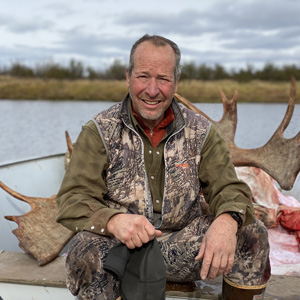 Thomas Reed lives with his family on their farm outside Pony, Montana. He is the author of four nonfiction books, most recently Give Me Mountains For My Horses, a memoir of a lifetime riding horseback in the Rockies. His column “Backcountry Dispatch” has been a regular feature in Wyoming Wildlife for two decades and his column “Blue Lines” has appeared nearly that long in TROUT magazine. He and his family operate a solar-powered organic farm that feeds nearly four dozen people in season, goodmamafarm.com. He is a passionate sportsman and conservationist who co-founded the bird dog hunting blog, mouthfuloffeathers.com, which has a wide following in upland hunting circles. Although he fancies himself the anti-elitist—he often shoots auto-loading shotguns and enjoys ice fishing—he is a setter man to the core.
Thomas Reed lives with his family on their farm outside Pony, Montana. He is the author of four nonfiction books, most recently Give Me Mountains For My Horses, a memoir of a lifetime riding horseback in the Rockies. His column “Backcountry Dispatch” has been a regular feature in Wyoming Wildlife for two decades and his column “Blue Lines” has appeared nearly that long in TROUT magazine. He and his family operate a solar-powered organic farm that feeds nearly four dozen people in season, goodmamafarm.com. He is a passionate sportsman and conservationist who co-founded the bird dog hunting blog, mouthfuloffeathers.com, which has a wide following in upland hunting circles. Although he fancies himself the anti-elitist—he often shoots auto-loading shotguns and enjoys ice fishing—he is a setter man to the core.
